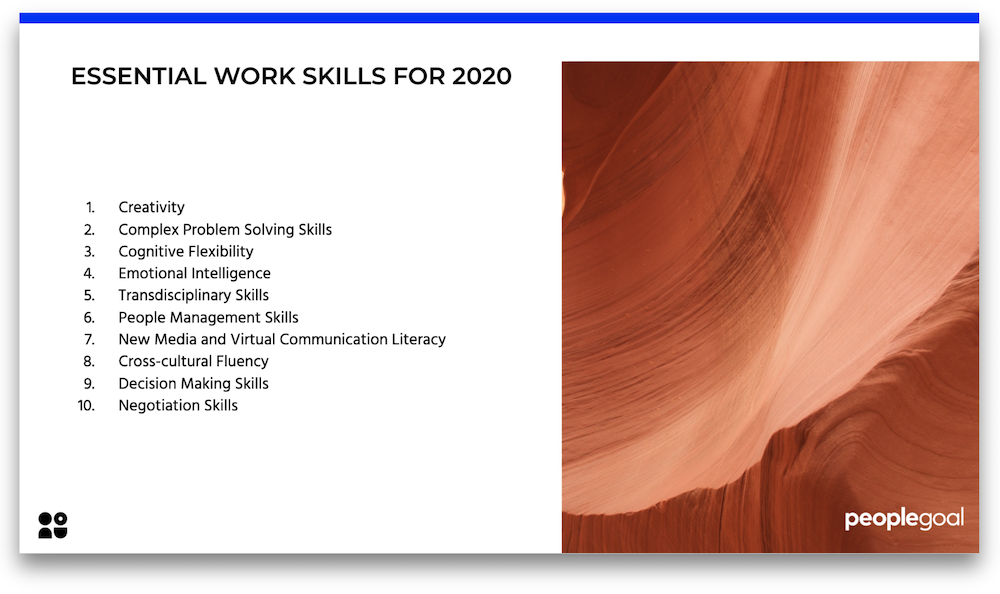The dictionary definition of ‘cascade’ is "a process whereby something, typically information or knowledge, is successively passed on". When it comes to the goals and objectives of a company and its employees, ‘cascade’ refers to the alignment of these goals across hierarchies. Traditionally this has been done by deriving employee goals from their manager’s objectives from the top down, along the reporting lines, but it’s far more effective to cascade the organizational goals across business units.
What does ‘cascade’ mean traditionally for goals and objectives?
The original idea of cascading objectives sought to align everybody in the company around a common strategy, from the top down. The CEO, CFO and founders began by setting their goals for the company. Senior management then used those goals as a basis for setting their own objectives, and the exercise continued down through middle management all the way to the workers. While in theory this does drive everyone in a common direction, in reality if you focus on the personal goals of each individual it becomes a long game of broken telephone. There are a couple of issues with this strategy:
- Nobody has visibility of the goals that are two or more levels above or below them, so they don’t know exactly how their role fits into the broader company strategy. Their personal objectives are based on their manager’s goals only.
- The entire process just takes too long. If you have to wait for every single level of the organization above you to meet, discuss the outcomes and set their personal targets before you can even start your own, you’ll miss the boat on getting anything done.
- The exercise is so rigid and time-consuming that the C-Suite especially becomes reluctant to update their goals and start the whole cycle again. Goals stagnate, are not updated and become irrelevant to the actual working strategy of the company.
What does ‘cascade’ mean for organizational goals these days?
A better term for cascading objectives is goal alignment. Having a system of flexible objective alignment across business units rather than personal goals allows you to implement those ideas of a unified strategic plan, open communication and personal accountability in a much more dynamic way.

With goal alignment, whether you’re using SMART goals or Objectives and Key Results, you still begin with the leadership team deciding the strategic objectives of the business for the next one to three years. These goals are then split up between the departments, org units, and teams that support a specific organizational goal area, rather than through the managerial lines. Objectives are cascaded down through the organizational levels where appropriate, but individuals can also align from the bottom up – meaning they can skip levels and align just to a department goal, or directly to a company objective when that’s relevant for them.
Learn more about aligning company objectives and managing organizational goals on PeopleGoal.
There are many benefits of this small change to the idea of cascading goals:
- It allows for more autonomy for employees. Not every employee’s goal aligns neatly to their manager’s objectives, so the traditional approach left many workers feeling like their goals were irrelevant. Allowing employees to set their own goals that align to any of the team, department and company objectives gives them a clearer idea of where they fit into the broader organizational strategy. This also promotes big-picture thinking and an open conversation between an employee and a manager about where they can really contribute.
- Visibility of the actual company direction is a lot more clear. The strategic business objectives need to be published to everyone in the company and constantly referred back to. This ensures that everyone is steered in the right direction without having to endure endless meetings and time spent digging for the right information.
- The system itself is a lot easier to manage. Everyone is responsible for their core area that contributes to the bigger strategy. When you spend the time to create a culture of open conversation and set aside time each quarter for making goal updates, you create a feeling of accountability across the organization.
Not all classic performance management techniques are wrong, but just because they’re there doesn’t mean they don’t need updating. Just asking the question, "What does cascade mean?" has led many businesses to make small changes to outdated ideas that really serve to engage employees and boost motivation – exactly what good goal setting is supposed to do.
Ready to 3x Your Teams' Performance?
Use the best performance management software to align goals, track progress, and boost employee engagement.




